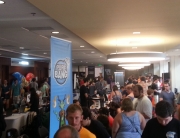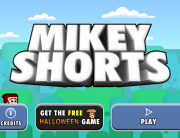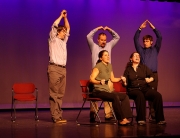Gamescape starts today! In case you missed last week’s post, make sure to check it out to get the latest information on the event. We hope to see some of you here!
While this event is always a fun (but grueling) experience, there’s a lot more to Gamescape than showing up with your game on a laptop. Gamescape is a free marketing and user testing opportunity (like all conventions and consumer events), and those things are crucial for indie studios to make their games a success. Here are some lessons I learned that helped Pure Bang Games make the most out of Gamescape.
1. Create a Demo
There is nothing more awkward than asking a player to stop playing, and nothing more discouraging than someone playing the entire game in front of an audience. Remember, this is a preview, not the show.
Having a demo also allows you to test specific parts of a game. What is it that you’re looking to find out about your game? That question will make it easier to figure out which aspects of the game to demo. Last year, we tested My Pet Rock‘s tutorial to see if players actually learned how to play the game, and if players left the game before completing the tutorial. Using that feedback, we were able to significantly improve the game’s retention by making adjustments to the tutorial.
2. Prepare a Pitch
You should prepare a five second pitch that you can tell to every person who comes to your booth. This isn’t complicated — don’t tell a story, just tell them what the game is about.
3. Let People Play Your Game
After you’ve given your pitch, let people player your game. And whatever you do, leave them alone! I mean it — don’t tell them how to play your game. The whole purpose of demoing the game is to see how people learn and play your game. You are not going to be in every living room telling people how to play — that’s the game’s job! .
4. Let People Remember You
Give out t-shirts, or any type of merchandise that people are willing to take home with them. T-shirts are usually the best option, since people love free t-shirts (unless the fabric feels like sandpaper), and it’s free advertising for you whenever they wear your t-shirts.






Leave A Comment